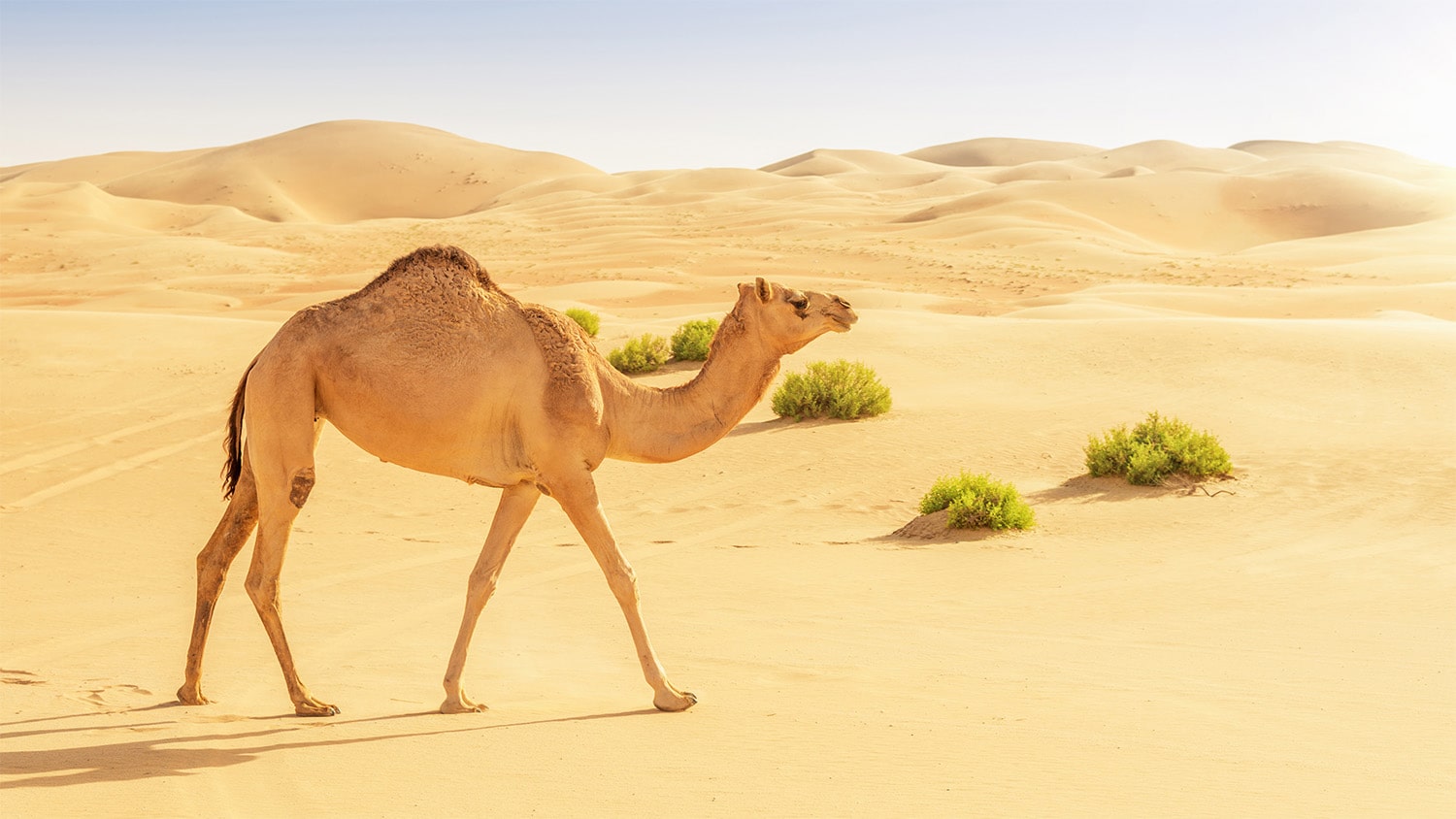
32 interesting facts about camels
- 👁️ 276
Camels, often called “ships of the desert,” are remarkable creatures that have adapted incredibly well to life in some of the harshest environments on Earth. These resilient animals are not only vital to the livelihoods of many cultures but also fascinating subjects of study due to their unique physiological and behavioral adaptations. Camels have been domesticated for thousands of years, serving as a means of transportation, as well as a source of milk, meat, and wool. There are two primary species of camels: the dromedary, or one-humped camel, which is native to the Middle East and the Horn of Africa, and the Bactrian, or two-humped camel, found in Central Asia. Here are 32 interesting and informative facts about camels that highlight their significance and the extraordinary adaptations that enable them to thrive in arid landscapes.
- Camels can drink up to 40 gallons (about 150 liters) of water in one go when they’re extremely thirsty.
- The dromedary camel has one hump, while the Bactrian camel has two.
- Camels’ humps store fat, not water, which they can metabolize for energy and water when food is scarce.
- They can survive without water for up to two weeks and without food for several months.
- Camels’ thick eyelashes and sealable nostrils protect them from sand and dust storms.
- Their large, flat feet spread their weight on sand, preventing them from sinking.
- Camel milk is a staple food in desert nomadic cultures and is richer in vitamins and minerals than cow milk.
- A camel’s body temperature can fluctuate from 34°C (93°F) at dawn to 41°C (106°F) by sunset, reducing the need for sweating and conserving water.
- Camels can run up to 40 miles per hour (64 kilometers per hour) in short bursts and maintain speeds of up to 25 mph (40 kph) over longer distances.
- They have a unique three-chambered stomach that allows them to efficiently digest tough plant material.
- Camels are social animals and naturally form groups called caravans or flocks.
- They have a lifespan of 40 to 50 years in the wild and even longer in captivity.
- Baby camels, called calves, can stand and walk within hours of birth.
- Camel’s fur reflects sunlight and insulates them from the desert heat.
- Their moans and groans are forms of communication, with each camel having a distinct voice.
- Camels have been domesticated for over 4,000 years.
- The gestation period for a camel is 13 to 14 months, resulting in usually a single calf.
- Wild Bactrian camels are critically endangered, with only a few hundred left in the Gobi Desert.
- Camel racing is a popular sport in some Middle Eastern countries.
- They can close their mouths tightly to chew thorny desert plants without injury.
- Camels’ blood cells are oval-shaped, which helps them flow more easily during dehydration.
- Ancient caravans of camels were used to transport goods along the Silk Road.
- Camel’s urine is concentrated to conserve water, and their feces are dry, which can be used as fuel for fires.
- They can eat salty plants that many other animals cannot, absorbing salt necessary for their bodies.
- Dromedary camels are the tallest of the three surviving camel species, standing at over 6 feet (1.8 meters) at the shoulder.
- Camel’s immune systems are exceptionally strong, making their milk of interest for medical research.
- They have a clear third eyelid that protects their eyes while allowing them to see during sandstorms.
- The word “camel” is derived from the Arabic word “ǧamal,” which means beauty.
- Camels can maintain their footing in the desert due to their broad, leathery pads at the bottom of their feet.
- They have been used in military operations in desert regions throughout history.
- The unique shape of a camel’s hump can change depending on its nutritional state.
- Camel’s hair was traditionally used to make warm, durable clothing and blankets for desert inhabitants.
Camels are not only essential for the survival of many communities in arid and semi-arid regions but also embody the incredible capacity of animals to adapt to extreme environments. Their physiological and behavioral adaptations offer insights into evolutionary biology, ecology, and even potential medical advancements. As both a symbol of desert life and a key to unlocking biological mysteries, camels continue to inspire curiosity and admiration. Understanding these magnificent creatures helps us appreciate the intricate balance of life and the importance of conservation efforts to ensure their survival for future generations.
Camels, often called “ships of the desert,” are remarkable creatures that have adapted incredibly well to life in some of the harshest environments on Earth. These resilient animals are not only vital to the livelihoods of many cultures but also fascinating subjects of study due to their unique physiological and…